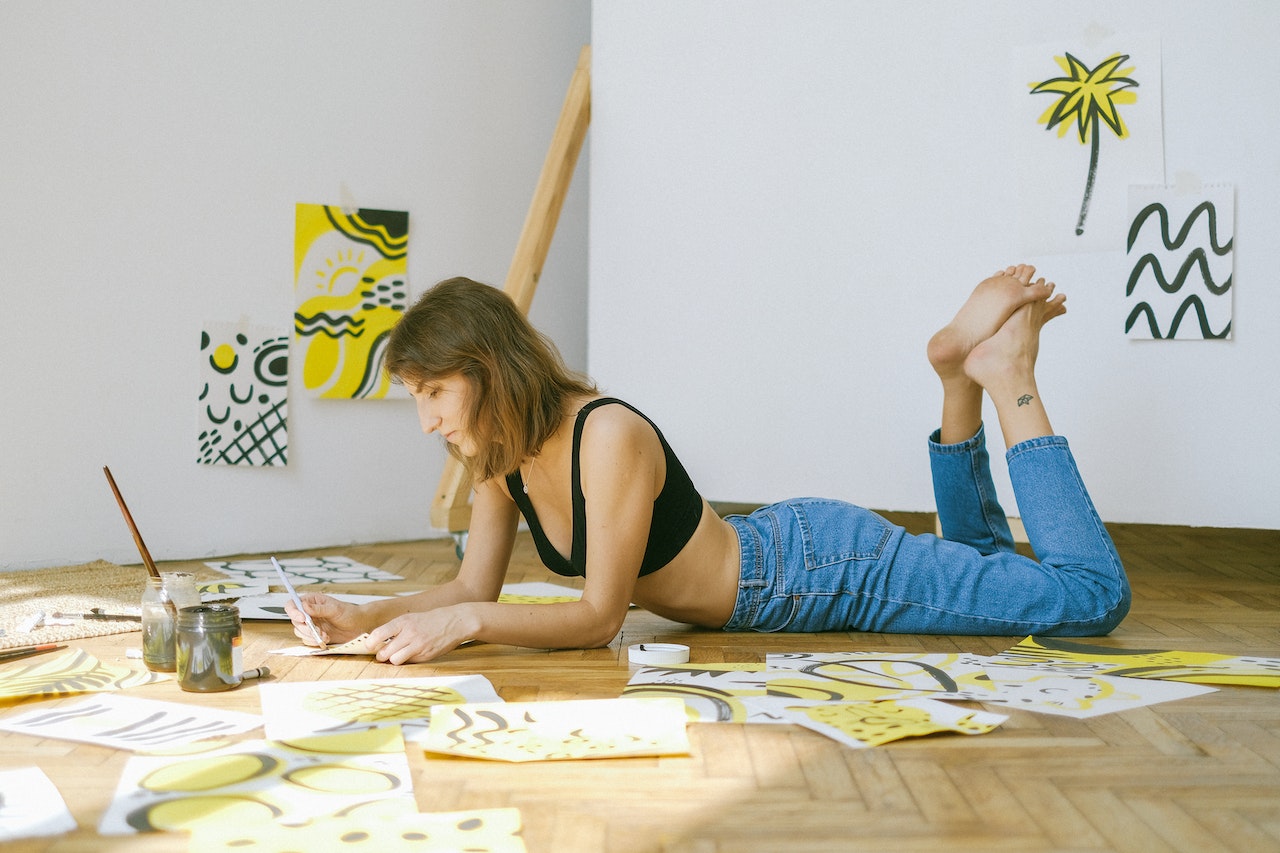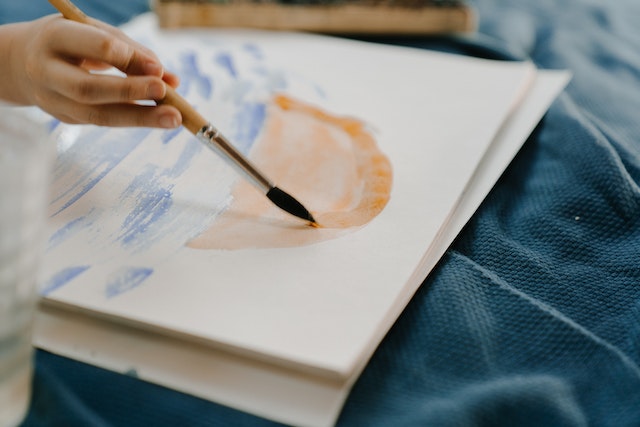Art Therapy: The Healing Power of Creativity and Self-Expression
Welcome, fellow art enthusiasts, to a world where colors dance, imagination soars, and self-expression knows no bounds. Today, we embark on a captivating journey into the realm of art therapy—a powerful approach that harnesses the healing potential of creativity. Get ready to unlock your inner artist, embrace the transformative power of art, and discover how self-expression can lead to profound healing and personal growth.
Art Therapy: The Healing Power of Creativity and Self-Expression
Welcome, fellow art enthusiasts, to a world where colors dance, imagination soars, and self-expression knows no bounds. Today, we embark on a captivating journey into the realm of art therapy—a powerful approach that harnesses the healing potential of creativity. Get ready to unlock your inner artist, embrace the transformative power of art, and discover how self-expression can lead to profound healing and personal growth.


The Art of Healing
Understanding Art Therapy
Art therapy is not just about creating pretty pictures; it's a therapeutic process that combines psychology and creativity to promote healing and well-being. It provides a safe and supportive space for individuals to explore their emotions, express their thoughts, and tap into their inner wisdom through art-making. In the hands of a trained art therapist, art becomes a powerful tool for self-discovery, emotional healing, and personal transformation.
Painting with Emotions
Art therapy allows individuals to express emotions that may be difficult to put into words. Through the use of colors, shapes, and textures, art becomes a language of the soul—a visual representation of inner experiences. Whether it's painting a vibrant abstract piece or creating a somber charcoal drawing, art provides a unique outlet for emotional expression and release.
The Art of Healing
Understanding Art Therapy
Art therapy is not just about creating pretty pictures; it's a therapeutic process that combines psychology and creativity to promote healing and well-being. It provides a safe and supportive space for individuals to explore their emotions, express their thoughts, and tap into their inner wisdom through art-making. In the hands of a trained art therapist, art becomes a powerful tool for self-discovery, emotional healing, and personal transformation.
Painting with Emotions
Art therapy allows individuals to express emotions that may be difficult to put into words. Through the use of colors, shapes, and textures, art becomes a language of the soul—a visual representation of inner experiences. Whether it's painting a vibrant abstract piece or creating a somber charcoal drawing, art provides a unique outlet for emotional expression and release.
Art Therapy in Action
Healing Through Creation
In the therapeutic setting, art becomes a vehicle for healing and self-exploration. Individuals can engage in various art modalities, such as painting, drawing, sculpture, collage, or even digital art, depending on their preferences and therapeutic goals. The art therapist guides the process, encouraging individuals to reflect on their artwork and explore the underlying emotions and meanings that emerge.
The Transformative Journey
Art therapy is not just about the end result; it's about the transformative journey that unfolds during the creative process. As individuals engage in art-making, they tap into their subconscious, accessing insights, memories, and emotions that may have been buried or overlooked. This self-exploration can lead to increased self-awareness, personal growth, and the development of healthy coping mechanisms.
The Therapeutic Benefits
Nurturing Mental Well-being
Art therapy has a multitude of therapeutic benefits for individuals of all ages. It can reduce stress, anxiety, and depression by providing a healthy outlet for emotions. Engaging in art-making activates the brain's reward system, releasing feel-good neurotransmitters and promoting a sense of well-being. Through the creative process, individuals can gain a sense of control, boost self-esteem, and develop effective problem-solving skills.
Unlocking Trauma and Grief
Art therapy has shown remarkable efficacy in helping individuals process and heal from trauma and grief. Art provides a safe distance from painful memories, allowing individuals to explore their experiences at their own pace. The art therapist creates a supportive environment where individuals can express and integrate their emotions, facilitating the healing journey.
Fostering Self-Exploration and Self-Acceptance
Art therapy encourages individuals to delve deep within themselves, exploring their identities, values, and beliefs. Through art-making, individuals can gain insights into their strengths, vulnerabilities, and aspirations. Art becomes a mirror that reflects their inner world, promoting self-exploration and self-acceptance.
Art Therapy in Action
Healing Through Creation
In the therapeutic setting, art becomes a vehicle for healing and self-exploration. Individuals can engage in various art modalities, such as painting, drawing, sculpture, collage, or even digital art, depending on their preferences and therapeutic goals. The art therapist guides the process, encouraging individuals to reflect on their artwork and explore the underlying emotions and meanings that emerge.
The Transformative Journey
Art therapy is not just about the end result; it's about the transformative journey that unfolds during the creative process. As individuals engage in art-making, they tap into their subconscious, accessing insights, memories, and emotions that may have been buried or overlooked. This self-exploration can lead to increased self-awareness, personal growth, and the development of healthy coping mechanisms.
The Therapeutic Benefits
Nurturing Mental Well-being
Art therapy has a multitude of therapeutic benefits for individuals of all ages. It can reduce stress, anxiety, and depression by providing a healthy outlet for emotions. Engaging in art-making activates the brain's reward system, releasing feel-good neurotransmitters and promoting a sense of well-being. Through the creative process, individuals can gain a sense of control, boost self-esteem, and develop effective problem-solving skills.
Unlocking Trauma and Grief
Art therapy has shown remarkable efficacy in helping individuals process and heal from trauma and grief. Art provides a safe distance from painful memories, allowing individuals to explore their experiences at their own pace. The art therapist creates a supportive environment where individuals can express and integrate their emotions, facilitating the healing journey.
Fostering Self-Exploration and Self-Acceptance
Art therapy encourages individuals to delve deep within themselves, exploring their identities, values, and beliefs. Through art-making, individuals can gain insights into their strengths, vulnerabilities, and aspirations. Art becomes a mirror that reflects their inner world, promoting self-exploration and self-acceptance.
Art for All
Art Therapy for Children
Art therapy is particularly beneficial for children, as it provides a non-threatening means of self-expression. Through art, children can communicate their thoughts, feelings, and experiences, even when words fail them. It helps them develop emotional regulation skills, build self-esteem, and process challenging life events in a developmentally appropriate way.
Art Therapy for Adults
Art therapy is not limited to children; it's a powerful tool for adults as well. In a fast-paced world where stress and pressure abound, art therapy offers a respite—a moment to reconnect with oneself, find solace in creativity, and discover new insights. It's an invitation to play, explore, and nurture the inner child that resides within each of us.
Art for All
Art Therapy for Children
Art therapy is particularly beneficial for children, as it provides a non-threatening means of self-expression. Through art, children can communicate their thoughts, feelings, and experiences, even when words fail them. It helps them develop emotional regulation skills, build self-esteem, and process challenging life events in a developmentally appropriate way.
Art Therapy for Adults
Art therapy is not limited to children; it's a powerful tool for adults as well. In a fast-paced world where stress and pressure abound, art therapy offers a respite—a moment to reconnect with oneself, find solace in creativity, and discover new insights. It's an invitation to play, explore, and nurture the inner child that resides within each of us.


Embracing Your Inner Artist
Cultivating Creativity
You don't need to be a skilled artist to benefit from art therapy. It's not about creating masterpieces; it's about embracing the process of self-expression and self-discovery. Let go of judgment and perfectionism, and allow yourself to play, experiment, and explore. The act of creating is inherently therapeutic, regardless of the artistic outcome.
Seeking Professional Guidance
While engaging in art for self-expression can be therapeutic, it's important to recognize that art therapy is a specialized field that requires the guidance of a trained art therapist. These professionals have the expertise to create a safe therapeutic space, guide the creative process, and facilitate the exploration of emotions and meanings within the artwork.
So, fellow art enthusiasts, embrace the healing power of art therapy. Unleash your creative spirit, dive into the world of colors and textures, and let self-expression be your guide. Whether you're painting, sculpting, or collaging, remember that art has the ability to heal, transform, and nurture the soul. Embrace your inner artist, and let the healing journey begin.
Embracing Your Inner Artist
Cultivating Creativity
You don't need to be a skilled artist to benefit from art therapy. It's not about creating masterpieces; it's about embracing the process of self-expression and self-discovery. Let go of judgment and perfectionism, and allow yourself to play, experiment, and explore. The act of creating is inherently therapeutic, regardless of the artistic outcome.
Seeking Professional Guidance
While engaging in art for self-expression can be therapeutic, it's important to recognize that art therapy is a specialized field that requires the guidance of a trained art therapist. These professionals have the expertise to create a safe therapeutic space, guide the creative process, and facilitate the exploration of emotions and meanings within the artwork.
So, fellow art enthusiasts, embrace the healing power of art therapy. Unleash your creative spirit, dive into the world of colors and textures, and let self-expression be your guide. Whether you're painting, sculpting, or collaging, remember that art has the ability to heal, transform, and nurture the soul. Embrace your inner artist, and let the healing journey begin.












